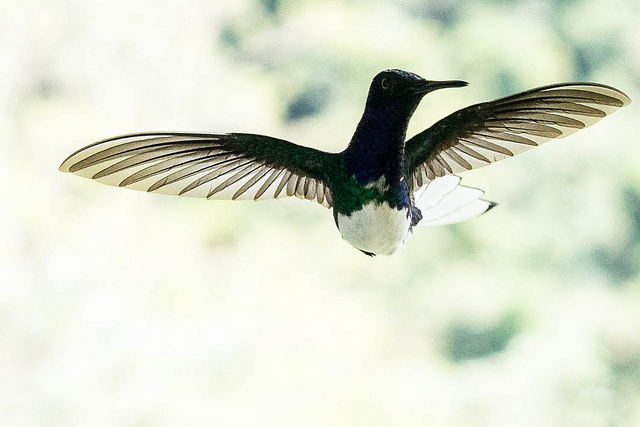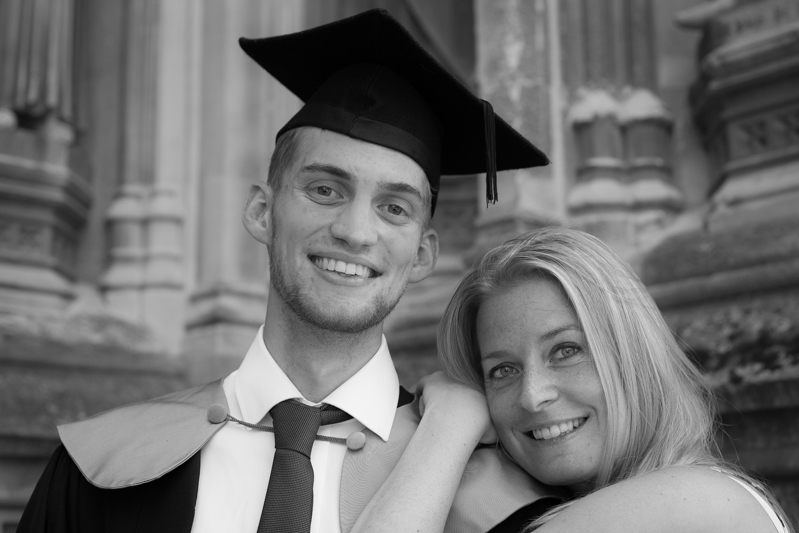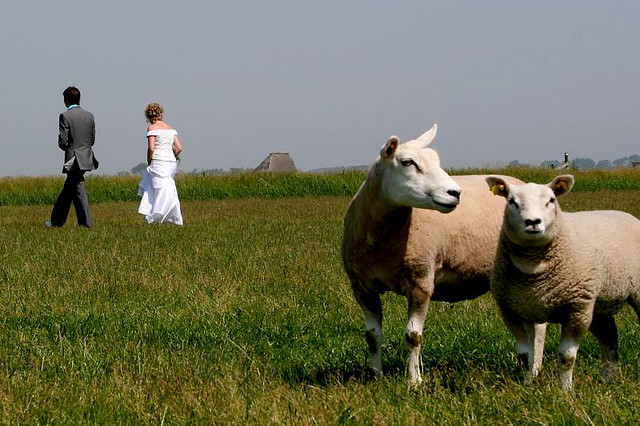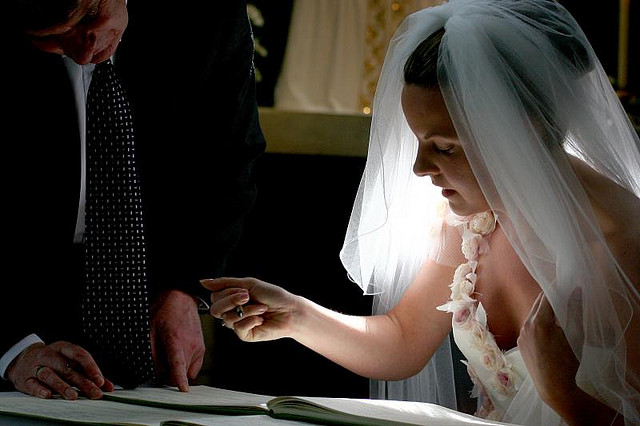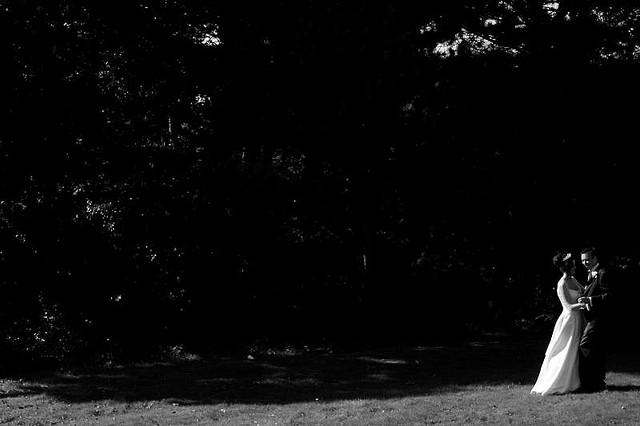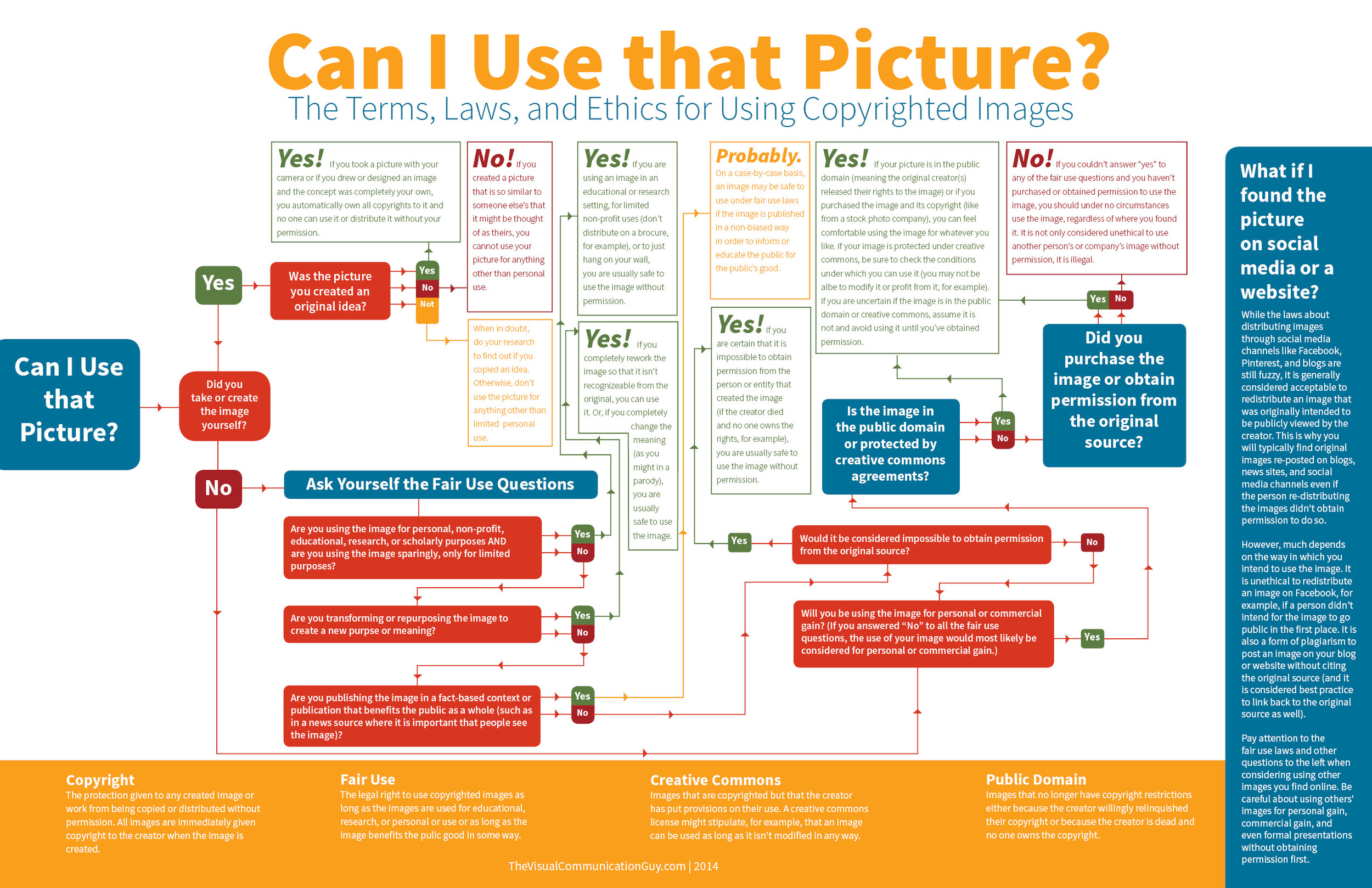Everything that's hip and cool from EyeEm this spring and summer.
Shutterstock, your business models sucks
Model releases: when and why you need them
No selfies at the polling booth
Want better Terms and Conditions? Ask for them!
Why is wedding photography so expensive?
I’m often asked about how much people charge for photography, and then frequently in the context of wedding photography. Honest truth? I don’t really know, but the persistent feeling out there is that wedding photography is really, really expensive. This is, in fact, true – it ain’t cheap to get your wedding photographed – but have you ever thought about why that might be? I decided to find out, and spoke to Randolph Quan, a London-based wedding photograher.
So, without further ado - In Randolph’s own words…
Spring is in full bloom here in the UK, so the hectic summer wedding season is about to arrive. Lately I’ve been getting a lot of couples asking me why wedding photography prices are so expensive. While it may seem like wedding photographers live an amazing life by charging through the roof for a day of work, it’s hardly the case.
It goes without saying that weddings are a costly affair. From the venue to the caterer to the wedding favors, the tab just keeps getting higher, and it often seems that wedding photographers are charging a large chunk of that tab. But have you ever though why wedding photography prices are so high? It’s because of the associated costs of being a wedding photographer.
Being a good photographer is an expensive investment. Sure, you can find cheap wedding photographers out there, but they’re cheap because they’ve possible cut corners on equipment, and insurance. Or they’re just plain stupid (you hired cheap and stupid?) So let’s take a look at what goes into a photographer’s overhead that adds up to the final cost of your wedding photographer.
1. Labour costs. This one is pretty standard across all industries. A photographer’s work doesn’t end when your wedding does. After the 5-10 hours they’ve put in working (on a Saturday, no less) at your nuptials, the photographer spends hours and hours editing your images so you get a wide array of perfect photographs by which to remember your day. Its not uncommon to work a full 3-4 days editing a wedding. Their time is even more valuable when you factor in the limited number of weekends in a year there are for a photographer to work.
2. Staff salaries. If you book a photographer that comes with assistants or second photographers, your cost is going to be higher. In return for getting more images from various places on your day, your photographer is going to have the pay those assistants.
3. Equipment. The pieces of equipment a photographer carries around is not your typical point-and-shoot. High-end lenses and bodies average around £1500 each. Photographers also carry back-up equipment in case their primary equipment fails, which adds to the cost of the wedding photography prices. In case your photographer is living in the Jurassic period and hasn’t switched over to digital (there are a few out there, somewhere), you also have to factor in the cost of film. Good wedding photographers easily can bring over £10,000 worth of equipment to shoot your wedding. Add in the prices of computers and editing programs like photoshop ( you did buy it right?) and costs begin to skyrocket. Luckily, its not always necessary in the UK to own a car so let’s not go there.
4. Insurance. Because cameras and equipment cost so much, photographers are smart to insure them. Just in case your drunk (who your mom insisted on inviting) cousin Jimmy decides he wants to spray champagne all over the wedding photographer’s equipment for a joke.
5. Web site. In this day and age, a photographer has to market himself with a very high-tech, professional Web site, which can cost a lot to design and maintain if the photographer doesn’t have web design skills. Its not unreasonable to spend over £5000 a year on website updates, and online marketing such as the sponsored links on Google.
6. Advertising. In that same vein, photographers also have to spend money on other types of advertising such as ads in the newspaper, business cards and brochures.
7. Photo extras. If you knew how much albums cost you’d have a heart attack. Albums are extraordinarily expensive and are often added into the wedding photography prices. Don’t forget the time it takes to design them as well.
8. Education. The more educated a photographer is, the better techniques and specializations will be used while shooting a wedding. As everything else, that education comes at a cost through instructors, college degrees, extra classes and seminars, etc. Intangibles such as expertise aren’t easy to measure monetarily, although we try!
So while you may be asking, “why does photographer X cost so much more than photographer Y?” the answer might be simple: Photographer X has spent more money developing his or her business into a full-fledged photography service, which ends up costing more money than an inexperienced photographer who moonlights part time on the weekend.
….And those Porsches we drive up to your wedding in just don’t pay for themselves now do they? :-)
About Randolph
Randolph Quan is a London reportage wedding photographer. You can follow Randolph on Twitter and Flickr or contact him via his website if you’d like to get a quote to get him to photograph your wedding.
All images are courtesy of Randolph. This article was originally published in 2009, but was then fully updated and revamped in December 2014
Creating a photography portfolio
You are into taking photos, obviously – so what do you do with them? Many of you probably make online galleries, or you create prints to hang on your walls – or perhaps you even sell prints to others. Eventually, as photography progresses from a mild interest via passionate hobby and into the realms of what could be seen as a professional career, you are going to have to create a portfolio of your images, to show to prospective clients.
Heck, even if you have no clients, you will still want to make a portfolio. Imagine how great it’ll be to show the grandkids!
So, you are a photographer, and you want to make a portfolio. I have had to do this a few times, and I have fucked up a few times, so I learned all of this the harshest way possible. Ah well – on with the show
Image selection
Galleries
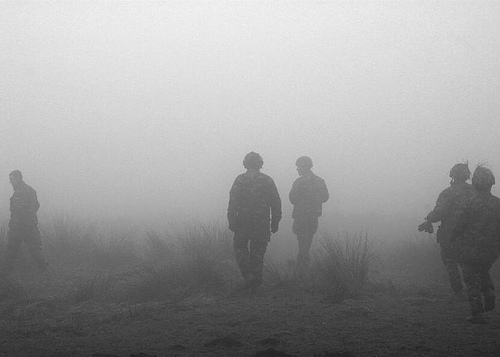 Into the Mist (Territorial Army III) by Photocritic.org, on Flickr
Into the Mist (Territorial Army III) by Photocritic.org, on Flickr
If you want to show your pictures in a gallery, you will need to make a selection of images around a theme of some sort. If you just run around and snap pictures, you will have to scrutinize them, to find out what they really are about. If there is no connection whatsoever between them, you might want to consider not making a portfolio, and rather concentrate on taking more pictures.
Why is a theme important? Well, although single pictures can be interesting, galleries tend to be interested in offering its visitors with a journey. Pick an emotion, and explore it visually, or perhaps a situation or a place. As long as there is some kind of “red thread” tying your images into a whole, you’ll be all right.
Make sure that the images are in a logical order – either cronological, or through mood development. Be prepared that you will probably have to talk the person you are presenting your portfolio to through all the pictures, so if you have some kind of story prepared, all the better. If you decide to mix colour prints and black and white prints, you’d better have a very good explanation as to why.
A good selection of images is 10-20. If you have several themes, make different portfolios, and present them separately.
Image libraries
This type of portfolio is the photographic equivalent of a “Best Of…” album.
Image libraries are the other extreme – here, it is okay to have a large batch of single, non-interconnected images, as this is not what the target audience is looking for. What they are looking for, however, is genericicity and perfection. The more generic the image is, the bigger the chance somebody will use it, as it is adaptable for many different situations.
If your image has a flaw, ditch it. If your image is only slightly out of focus, ditch it. If your image has brand names or visible logos in it, chances are it is worthless in connection with image libraries. If you do not have model releases for the people in your images, get rid of the pictures.
In short: Make sure you only show your very best images. It is better to pitch 3 perfect pictures than 15 good ones, but that don’t stand out from the mass. You should aim for 7-15 great pictures, however.
Commercial photography
 Strongly emotive photos can help your portfolio shine
Strongly emotive photos can help your portfolio shine
If you are making a commercial portfolio, be prepared to make it focussed. You might need to change your portfolio around depending on who you are pitching it to. If you are pitching fashion work, make sure you have 5-6 pictures from each series you have done, to show that you can consistently take good pictures. If you are doing product photography, make sure that you do the same: Same product from various angles etc.
If you try to pitch your general skills as a photographer, make sure that you make several portfolios. One for portraiture, one for nature, one for product photography, etc. That way, the person reviewing your portfolio can mentally prepare for something else. Also, it allows you to show only the portfolios that are relevant for the job you are doing.
If you have gotten pictures in print (especially viable if you are planning to do freelance news photography), include both prints and newspaper clippings – side by side on adjecent pages is good.
Portfolio Presentation
This is what people ask about most: How do you present your portfolio?
 For School Use Only by Photocritic.org, on Flickr
For School Use Only by Photocritic.org, on Flickr
First of all, make sure that your prints are of the best quality possible. This means that they should be of a decent size (approximate A4 / letter size is an ideal tradeoff between presentability and portability)
As for the actual presentation of the portfolio, the answer is difficult to offer. Although a nice leather folder with high-quality plastic inlays to keep your images in offers a good initial impact, it may not be ideal, as the plastic may introduce sheen and / or reflections on the images, making them difficult to see.
In the past, I have seen portfolios that are presented as pictures mounted on cardboard, even loose pictures in a rolodex-style folder. You could consider getting a mini- easel that you can place the images on individually. That allows you and the reviewer to take a few steps away from the images – an especially good bonus if that is how the images are meant to be seen.
Creativity is a big bonus – if you manage to come up with a good way to present your portfolio effectively, it probably means you are doing the right thing. Don’t fall for the temptation to show your images on a computer screen or data projector, however, unless this is how they are meant to be presented. If you only have slides, there is no way around showing it on a slide projector, but if there is any way you won’t have to bring and / or arrange a projector, it is better.
Oh, and it is all in the attitude. Go in there, be sure of yourself, talk, talk, talk, and don’t for a second let up that you had even slightly considered the possibility of them not liking your images. You’d be amazed what difference it makes.
Good luck!
Setting up an affiliate programme
Making money from photography can be hard. Between 'rights for reach', Getty permitting non-commercial use of some its images for free, falling stock percentages, and embedding rather than purchasing for website use, it feels as if there's a grizzly trend for photographers to make money in ways that uses their images as income generation leads, rather than income generators.

I'm far from keen on this descent of the photograph from product to income lead generator, but whining about the situation won't cure it. Rather, you need to harness all of your assets and put them to work for you. Even if you are continuing to make money from your photography, or if you're an amateur who doesn't sell their work, it is worth capitalising on your website views to have some other means of bringing in some pennies, especially if you find yourself thinking 'If only I had a pound for every time some bought a Really Good Widget on my recommendation!' Maybe you should consider affiliate marketing?
What is affiliate marketing?
The theory behind affiliate marketing is fairly simple. You form some kind of partnership with companies and retailers related to your sphere of operation. If and when you mention their products or products that they sell on your website, maybe in an article or perhaps in an advertising box or a banner, you include a unique tracking link to their website or webstore. Should your readers click on that link and make a purchase, you get a kick-back from the sale. If you promote a product, consciously or not, you might as well benefit from it.
Which companies offer affiliate schemes?
There's a welter of photography-related companies that run affiliate schemes that you can incorprate into your website. You can choose from retailers and e-tailers such as Adorama, Amazon, B&H, Jessops, and Waterstones. Plenty of printers and print firms offer affiliate schemes: Moo, Photobox, Shutterfly, and Snapfish, for example. Our publishers, Ilex, runs an affiliate scheme. And so does Triggertrap.
Which affiliate schemes should I join?
First, you really need to think about the content that you produce and the nature of your readership. You'll do best out of affiliate marketing if you form partnerships with companies that will appeal to your readers. After that, you need to decide on how mercenary you want to be. Are you prepared to link readers to any company in order to capitalise on their spending? Or are you more discerning and will use your affiliate links as more of an endorsement? If you're always using a particular product and singing its praises, encouraging other people to use it, why not make some pin-money from that?
What do the links look like and how do I use them?
Generally speaking there are two forms of affiliate marketing you can use: links and banners. When you form an affiliate partnership with a company, you'll be provided with a dedicated affiliate link. Every time that you mention the company or any of the products that it sells, you link to its website or the product in its webshop and add the affiliate link to the end of the URL.
For example, say I ran the Really Good Widget Company and you signed up as an affiliate partner. I'd give you an affiliate link which might look like ?afl=101. If you mentioned one of my Really Good Widgets in a blog post or article, you would link to its page in my webstore and apend ?afl=101 to its URL. If a reader clicked the link and bought a Widget, I'd give you a percentage of that sale.
Affiliate links can take a little time to insert: you need to hunt down the webpage to which you want to link and add your unique affiliate code, but it's not too much of a faff, especially if you were already going to link there. If you're handy with coding, you can write a bookmark to automatically add your code to a URL with a click.
As well as these links, some companies provide affiliate linked banners and boxes that you can insert into your website which look like advertising. If your readers click through from your website to their webstores and make a purchase, you'll receive a share of the sale. Provided that you can easily include a banner or some advertising boxes on your website, these are simple to use.
How much can I expect to earn?
How long is a piece of string? For a start, I don't think that I've found two affiliate schemes that offer the same rewards. Ilex offers a 15% share of each sale; Triggertrap starts with a 5% share of the order value, but that rises to 10% after you generate 50 sales. Other companies are less generous, with 3 or 4% shares of order values. And it depends on the expiration length of your affiliate links, too. Some companies provide 7-day cookies but others offer 30-day cookies. This means that when someone clicks through a link, they don't necessarily have to make the purchase immediately. With a 7-day cookie they could return within the following week and buy their Really Good Widget and you'd still get your fee; but with a 30-day cookie, their click is remembered for almost a month.
Do take note of the scheme's minimum payment sum, too. Some companies set a high threshold and you'll need to generate a lot of sales before you can reap the benefits in cash. Also give some consideration to payment method. Cashing an international cheque is expensive. Do you have or want to have a Paypal account? Is an electronic bank transfer best?
You also need to deploy your affiliate links effectively. Bombarding your readers or viewers with affiliate links that you've shoe-horned into blog posts or image captions at every opportunity might not win you many favours. But if you used a technique mentioned in an Ilex book, link to the book when you blog about it. If you shot an image using Triggertrap, link to Triggertrap when you caption it. You need to be positive about your linking, but not overly enthusiastic.
I'm sure that there are some people who've managed to sustain their empires through affiliate marketing alone, but they're likely very scarce. Don't expect affiliate marketing to make you a fortune, but with careful management it will be preferable to a poke in the eye with a sharp stick.
Is there anything else I need to know?
Yes. EU law demands that if you use cookies on your site you must declare this to your visitors. Seeing as affiliate marketing relies on cookies, you will need to include a cookie banner on your website should you be based in the EU. The good news is that for anyone using WordPress, there are a welter of cookie banner plug-ins available. Pick one and away you go.
Some companies want you to have a minimum number of visitors to your site each month before you can sign up. It helps to have your figures to hand before you try to forge any partnerships.
Finally, signing up for a US-based affiliate programme when you're extra-US can be a headache when it comes to the IRS. I know this from experience. Affiliate marketing is meant to make you money, not cost you money in terms of time or frustration; do consider fiscal geography when signing up for an affiliate programme.
Great! Where do I sign up?
Most companies that offer affiliate marketing have a link at the foot of their websites. This will take you through to an affiliate programme portal, which is usually operated by a third party. Affiliate Window is popular. Triggertrap uses LeadDyno. For some you need to provide quite a bit of information from the outset, others are quite minimalist.
Once you've done that, you'll be given your affiliate code and banners to include on your website. Then you can start to watch the pennies roll in.
Let wedding photographers do their jobs; or why you can't expect a disc of unedited images on the cheap
Oh dear. That was a bit awkward. Sitting on the floor at my nephew's birthday party, trying to capture pass-the-parcel photos that weren't anything other than wadges of wrapping paper thrust towards me in a multi-coloured de-forested haze, I encountered a fairly recently married and really rather belligerent woman who who wanted to berate me for the fees charged by photographers. In particular, she was infuriated that her wedding photographer wouldn't just hand over a DVD of all the original images from her big day and couldn't understand why they needed to be edited and why she couldn't have them straight away. Yes, oh dear. Despite being focused on my attempts to capture my nephew smiling and my niece not resembling a demonic, sugar-crazed monster, I did try to offer a reasonable explanation for why her wedding photographer wouldn't just hand over raw images for a flat fee. Naturally, I coined what I think is the perfect analogy when it was too late and I was on my way home. Thus for the benefit of everyone who might yet face this scenario, here it is:
Asking a photographer to hand over a memory card, USB, or DVD of raw images is akin to asking an author to present you with their book in manuscript format: unedited, unformatted, and including the paragraphs and chapters that didn't make it.
For any brides, grooms, or parents of the soon-to-be- or just-marrieds out there who might be wondering the same thing, I hope this helps.
A bundle of unedited, unprocessed images isn't the whole story, the right story, or the finished story. You have to trust the photographer to produce a final version that's just right, as right as a book is on publication, as a painting on hanging in a gallery, or as a sculpture upon exhibition. What you're paying for is the complete product, finished by the photographer and making use of all of her or his skills. While any photo needs to be properly exposed and well composed, there are adjustments and edits that need to be made in post-production. And sometimes, they look better in black and white, too. This is all a part of what a photographer does; it is an integral part of of the process of creating images.
To continue with the book/author analogy, when you purchase a book, you don't get to choose the words on the page, or the images that might illustrate it; what you do get to choose is the format in which it comes, whether that's a signed hardback copy or a digital download. When your wedding photographer has done her or his job to tell the story of your wedding day, you can select from luxury albums or USB transfer.
If you're still not sure why photography is so expensive, there are plenty of photographers who've done their best to break down their costs and explain why wedding photography starts at around £1,500. (Yes, there are people who do start cheaper, and some more expensive. It's an average figure.) We even have an article covering it here on Photocritic. However, hoping that you'll be able to reduce your costs by asking for unedited images in digital format is a misrepresnetation of your wedding photographer's job.
I don't especially want to launch into a 'you get what you pay for' tirade about the perils of hiring an inexperienced photographer and the images from your wedding day being an unmitigated disaster. I understand that some people have very restricted budgets and finding the fees requested by some photographers is beyond them. There are photographers to suit every budget; you need to be certain of what they can provide and if it meets your expectations, but you must let them do their jobs. And that job is a finished product, just like an author's book.
What do football, copyright, and Vine have in common? A lot of money and a lot of confusion
The English Premier League kicks off tomorrow and in addition to last minute transfer news, shock managerial sackings, and managerial press conferences, copyright and broadcasting rights and the use of tablets inside Old Trafford have made headlines, too. The issue of tablets and laptops inside Old Trafford is fairly self-explanatory: Manchester United has prohibited bringing them inside the grounds owing to security reasons. The copyright issue seems to have people in more of a flap. And heavens, this isn't the first time it's happened. The Premier League has stated that it will be taking action against people who compile and share Vines of goals that they record from live broadcasts of matches. Being able to live-pause broadcasts makes this relatively straightforward technologically, but it's a breach of copyright.
This has thrown up a few interesting questions, not least from the BBC's Technology Correspondent, Rory Cellan-Jones, who wondered if his Google Glass recording of Brentford matches would violate copyright.
https://t.co/TIbfR6kft6 Now worried about my Brentford through Google Glass video - am I in copyright trouble?
— Rory Cellan-Jones (@ruskin147) August 15, 2014
I'm fairly certain it wouldn't violate copyright, but it could well infringe on other rights. So if everyone will be please calm down, and preferably sit down, I'll explain what (I think) the situation is.
Copyright
Copyright is the right to make copies of someone else's creative endeavours. When I click the shutter on my camera, I own the copyright to the image that creates. When BT Sport or Sky Sports record and broadcast a football match, they own the copyright to the broadcast. That is, the producer decides on which cameras to use and how to put together their sequence of use, which constitutes the original work. The football match itself isn't copyrightable, it's the broadcast of it that is.
As well as charging their subscribers a fee to watch the matches, BT Sport or Sky Sports can charge other broadcasters to use these images or they can keep them all theirselves. Their pictures; they decide.
When someone sitting at home on the their sofa and watching a football match compiles a Vine of the goals using pictures transmitted by BT Sport or Sky, they're violating BT Sport's or Sky's copyright. They are taking BT Sport's and Sky's work and using it without permission and without paying for it.
When you read that BT Sport and Sky Sports are complaining about their copyright being violated, this is what they mean.
Broadcast rights
When BT Sport and Sky Sports won the contracts to televise Premier League matches, they paid an excruciating sum of money for broadcast rights, or the opportunity to transmit live pictures from the game. The BBC holds the broadcast rights to highlights of the Premiership matches. They paid a fair whack for that, but not quite as much as BT Sport and Sky Sports. This season The Sun and The Times have the online rights; this is big business and it's this money, paid to the Premier League, which has made it into the financial behemoth that it is.
Turning up at Old Trafford or Stamford Bridge and taking photos or video of a match would get you into a different type of trouble, therefore. If you were to try to stream the match live from your seat, you wouldn't be very popular with a gaggle of corporate lawyers for infringing on broadcast rights. Not to mention you'd likely upset the fans sitting around you if you obstructed their view. Whether or not you can take a camera into a football stadium and take some photos for personal use seems to be open to clubs' interpretation. It's worth checking what it says on the ticket. Some might be happy for you to take a photo to remind yourself of the day; others might want to throw you out for just having a camera.

Broadcast rights and copyright are different beasts, but from the same genus. You'd own the copyright to any images you were fortunate enough to make inside a stadium, because you'd made them. What you wouldn't own are the broadcast rights to let you redistribute them. Not unless you'd paid an eye-wateringly large sum of money for the privilege and you probably don't have enough kidneys for that.
Performers' rights
Back to Rory Cellan-Jones and his tweet asking about copyright violations at Brentford, someone asked if it wouldn't breach performers' rights. No. As far as I can tell, performers' rights don't extend to sporting events, at least not in the UK, so there would be no infringement there.
Tablets
Now we get onto Manchester United's prohibition against tablets and laptops inside Old Trafford, which was announced earlier this week. According to officials there, the decision to ban larger devices, including iPad Minis, was made in response to security concerns. They're worried someone might want to pack a bomb into a device, much like airlines are. The ban doesn't extend to smartphones, provided that their dimensions are no larger than 15 centimetres by 10 centimetres (5.9 inches by 3.9 inches). Seeing as smartphones have not been banned and they're still capable of taking photos, we'll take this one at face value. And quite frankly, if it stops people obscuring others' view with when they're recording with the iPads, so much the better.
In conclusion
Please remember that I'm not a lawyer. I'm a writer who takes a fiendish interest in copyright and I've applied a healthy dose of common sense to its ramefications, together with a bit of research.
If you want to take photos or video at any sporting event, I suggest that you check with the stadium before you turn up with any manner of kit. You don't want to forfeit your ticket or have your gear confiscated. Speaking from experience, just go and enjoy the game. Fiddling about with electronic equipment detracts from the atmosphere and what's happening in front of you - the reason why you're there. But maybe that's for another article.
When it comes to making Vines from what you can see on TV - don't. Protecting intellectual property applies to little guys as much as it does to big guys. If we don't want them stealing our content from social media sites and using it for free, best not to infringe their copyright either.
Just because you found it on the Intergoogles it doesn't mean it's free to use
I was having a fairly good morning, until I took my lunchtime peruse of Feedly to see if anything interesting or exciting had dropped into it. Apart from a new post by my favourite film critic, nothing was outstanding until I reached Lifehacker. The Lifehacker team has just posted a link to a visual media usage rights flowchart created by The Visual Communication Guy. Excellent! Ignorance is no excuse when it comes to image theft and unauthorised use and reproduction of photos. While we're all perfectly aware that when you place something on Facebook, Flickr, or your personal version of Frankie's Funky Photos, there's a real chance that someone will try to use it improperly, the more that we can educate people about the right way to do things, the better. This one, however, was not quite so excellent.
You'll find the original here and the Lifehacker article here.
Apart from the fact that it's far too dense and word-heavy, it contains at least one humongous, glaring, verging on the unforgiveable fault for something that purports to advise on usage rights. Take a look and tell me if you can see it. (And tell me how many others you can see. There are plenty.)
Found it?
If you haven't, because it's a horrid thing to read, here it is:
While the laws about distributing images through social media channels like Facebook, Pinterest, and blogs are still fuzzy, it is generally considered acceptable to redistribute an image that was intended to be viewed publicly by the creator. This is why you will typically find original images re-posted on blogs, news sites, and social media channels even if the person re-distributing the images didn't receive permission to do so.
No, no, no, no, no, no. And for good meaure I'll say it again. No.
Images that are shared on social media aren't free for redistribution unless the creator has expressly said so. I put my images on Flickr and use them here on Photocritic and put them on my personal website to display them, to illustrate concepts, to tell stories. I do not put them on the Intergoogles so that anyone else can make use of them. And you should never assume that anyone else does, either.
The law regarding this is hardly fuzzy about the situation, either. There's been at least one monumental court case that supports this opinion, when photographer Daniel Morel sued AFP and Getty Images after they redistributed his images from the Haitian earthquake, which he'd shared via Twitter, without his permission.
Copyright exists from the moment that someone creates something, whether it's a photograph, a tune, a poem, or a piece of prose. It doesn't matter how a creator wishes to share her or his creation with the world, unless she or he has definitely signed away the rights to it, the rights remain theirs.
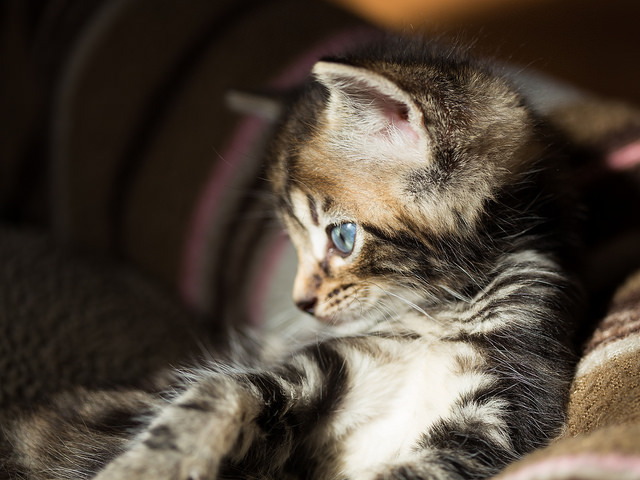
To be fair to the Visual Communications Guy, he does state 'My rule above all else? Ask permission to use all images. If in doubt, don’t use the image!' in the post that accompanies the flowchart, but that's not really good enough. It's the flowchart that people are going to share and see, not the article. When incorrect information such as this gains traction, we all suffer. Suddenly what's not right becomes commonly accepted. Or people who were doing their best to not be ignorant are in the wrong when they thought they were doing right.
So I'll say the mantra and everyone can repeat it after me: 'Just because I found it on the Internet, it doesn't mean it's free to use.'
Buying and selling mobile imagery - where to go
There have been at least two pieces of news this week featuring companies that sell stock images created on mobile devices: first, EyeEm announced that it has redesigned its Android app and has partnered with Uber to offer new users a free ride to let them go places to take photos; second, Fotolia has also released a new Android app—Fotolia Instant—to complement its iOS version, which allows photographers to upload and sell their mobile images via the stock site. This got me thinking: how many stock agencies are mobile photo-friendly? Or where can you buy images made on mobile devices if that's what you want or need? I did a little digging and a little thinking and put together this list. I've tried to limit it to agencies or sites that are mobile-specific, have dedicated mobile collections, or easy means of uploading mobile images. There are sites such as Picfair that readily accept mobile images, but that's just part of its library.
Mobile-oriented sites

EyeEm
EyeEm is a mobile photography sharing app and community that launched Market, a platform for its members to sell their photos, earlier this year. Invitations are still being issued to join Market, but it's simple enough to request one.
EyeEm Market EyeEm apps: Android; iOS

Foap
Images can only be uploaded to Foap via its app. As well as adding images to the Foap library, image-makers can participate in missions set by brands and agencies searching for more specific content. Foap's terms of use are quite broad, which is worthy of consideration before deciding to sell images there.
Foap website Foap apps: Android, iOS

Scoopshot
Scoopshot expands on Foap's model, with buyers setting tasks for photographers in order to acquire the images they want. If someone sees a news image that they think is vaulable, it can be sent to the news task. Scoopshot doesn't go in for manipulated or filtered images; they prefer fresh and newsworthy content that meets task criteria.
Scoopshot website Scoopshot apps: Android, iOS

Twenty20
We took a look at Twenty20 last year and while we thought its simple pricing structure for selling mobile image files was great, the sales mechanism required some refinement. It's still in the beta stage, but it is there!
Twenty20 website Twenty20 app (iOS only)
Mobile-friendly agencies

Alamy
The more traditional Alamy stock agency has embraced mobile photography and its photographers can use the Stockimo app to upload their mobile images for sale amongst the Alamy library. Buyers can look for mobile images in the dedicated Stockimo collection.
Alamy website Alamy Stockimo collection Alamy Stockimo app (iOS-only)

Depositphotos
Depositphotos is a microstock agency that sells images under royalty free licences. It has a dedicated mobile photography app and collection: Clashot.
Depositphotos Clashot Clashot apps: Android, iOS

Fotolia
Fotolia is home to over 20 million images and it's prepared to add mobile photos into that mix. You can find all its mobile images in its Fotolia Instant collection.
Fotolia website Fotolia Instant collection Fotolia Instant apps: Android, iOS

Getty, including iStock by Getty
When people think of stock agencies, they think of Getty. If they don't think specifically of Getty, they might well think of a Getty subsidiary. Getty photographers are being invited to join Moment, along with the old Flickr collection, while new photographers should be able to join in due course. Whether or not you want to get involved with the Getty licensing machine is another matter.
Getty Images Getty Moment app (iOS-only)
Any other suggestions? Leave them in the comments section!
ImageBrief: a new approach to selling images
Control, commission, and contacts. If that sounds like a reasonable premise under which to sell your image online, you might want to check out ImageBrief. It's an online global image marketplace where buyers request specific images to meet their needs and photographers submit photos that they believe meet the brief. The average fee is $800 and photographers take upto a 70% cut. Interested?
How does ImageBrief work?
Buyers, who are a mixture of art buyers, creative directors and editors at advertising agencies, brands, corporates and publishers, as well as freelancers, submit a brief describing exactly what they want in detailed but natural language. Photographers who are signed up to ImageBrief can then submit photos that they think meet the brief's criteria for consideration. Before any images are presented to buyers, however, they're all vetted by the ImageBrief staff to ensure relevance and maintain quality. For the successful photographers, there's a potential 70% of the commission fee available. I've not seen one brief below $200 and plenty in excess of $1,000.
Photographers are able to keep up with new briefs via email and an iPhone app notification. There's an Android app in the works.
In a world where the stock agency model holds sway, how is ImageBrief attracting buyers and photographers?
It's all very well having a great model that serves buyers' needs without giving them photo-blindness from trawling through acres of potentiall suitable images, and gets photographers' images in front of buyers, but if no one knows about it, it doesn't benefit anyone. ImageBrief has found that word-of-mouth has worked in their favour, togetehr with social media and targetted email campaigns. Rainer Waelder was spotted by the ImageBrief team and invited to submit a portfolio for consideration.
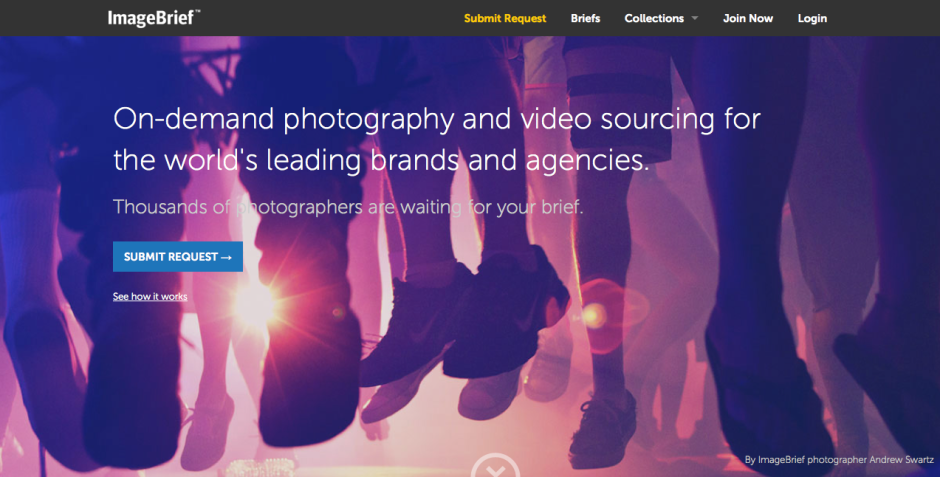
The ImageBrief team is very keen to point out that its fresh approach is part of its appeal: 'The images are different, the process is different and the outcome for the brands and clients they represent is different.'
The importance of the curaton model
ImageBrief regards the curation model as critical to its success and integrity. 'It's what allows us to present such amazing, tailored content. Each of our photographers is reviewed upon registration and then images are curated every step of the way to ensure quality and relevance to the client.' The buyers aren't overwhelmed in their search and photographers making sales take better a better cut of a significant fee. It's win-win.
Photographers' opinions
Uploading images to a stock agency and forgetting about them might seem like a relatively easy and stress-free option to sell your photos, but ImageBrief photographers are quick to point out that it doesn't offer nearly the return that an ImageBrief sale does. 'I’ve only made one sale so far with ImageBrief though I have been shortlisted several times. But that one sale was my biggest ever and more than made up for the effort expended on other briefs. One of the great things about ImageBrief is that it attracts high-profile clients still willing to pay a fair and proper rate for images. That makes us photographers feel it’s worth our while to submit images in the first place,' says UK photographer Matt Doggett.
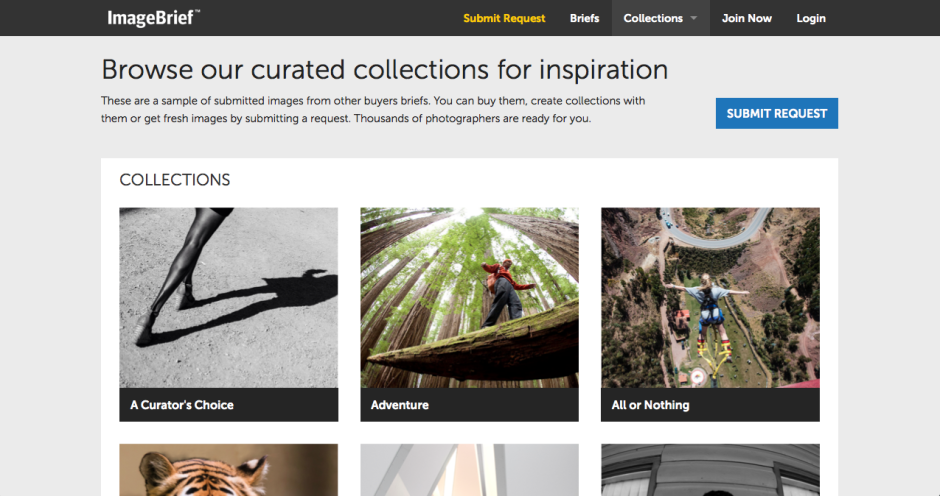
What's next for ImageBrief?
A commissioning platform is in the works that is intended to allow clients to seek out a photographer when they haven't found the perfect pre-existing image. This can be tailored based on location, categories, or references. A new premium account structure will let photographers put themsleves forward for assignments and maybe develop relationships with clients that could go for ages.
Want to get involved?
It's free to sign up to ImageBrief and that's probably the fastest way to learn how it works. Look at the kinds of images that clients are buying in the 'Collections' section. Download the app so that you can keep on top of new briefs.
ImageBrief photographer Slobodan Blagojevic recommends being selective and making sure that you fulfil the brief to be in with a chance, but perhaps more importantly 'do not think of ImageBrief as just another stock library, i.e., do not submit typical stock imagery. Clients come to ImageBrief precisely because they want something different, something fresh, something unique.'
Street photography and the law
A lot is said and written about photography and the law – and to be honest, you’d be mad to get involved in the fray. Of course, I am that mad, which is why the Rights vs Respect in Photography ended up published here on the site.
Now, the other day, one of my readers, Brad, posted a rather fantastic and soberingly clear comment about what the law actually means to photographers. It was written from an US point of view, but frankly, the law is similar in much of the world. Beyond the law, however, you should be looking for a helping of ‘common sense’. This ‘common sense’ thing isn’t as common as its name would indicate, so hereby; a healthy dose of common sense and a quick refresher of what you can and can’t do when you’re out and about with your camera…
I was so happy to find this in my comments, that I figured it’d be a crying shame if it stayed hidden away as a comment on a long-forgotten blog post, so hereby, republished in all its glory. That means that some of the comments (where they are replying to other comments) are a little out of context, but I’ve linked directly to the correct comment where possible, to clarify.
Take it away Brad:
The law can essentially be summed up like this:
1. You can take a picture of anything you see – especially when you are in public.
2. You CANNOT take pictures where there is an expectation of privacy such as in a rest room or locker room. (more about Expectation on Privacy on Wikipedia)
 3. You cannot legally trespass, but if you are on a side walk and you were so inclined you can photograph people in their back yards or on their porch. I think the back yard is over the line though.
3. You cannot legally trespass, but if you are on a side walk and you were so inclined you can photograph people in their back yards or on their porch. I think the back yard is over the line though.
4. You can take pictures of people or children in any public context. BUT DON’T FOLLOW LITTLE KIDS OR YOUNG WOMEN AROUND AND SCARE THEM. Legally though, you can follow people to get that shot – remember the Princess Diana chase. Perfectly legal.
5. You cannot profit from your work without signed releases. But to restate, feel free to snap away. It is only your commercial use that is limited.
6. You NEVER have to surrender your camera to or discuss the nature of your photography with anyone without a court order.
The photo with the guy wearing the ‘I ♥ Michelle Obama’ shirt is Me to, brother. Me too. by Photocritic.org, on Flickr. It was taken street-photography style without permission – but sits very nicely in my portfolio, which is perfectly legal.
Protecting your right to taking photos
I hate government oppression too. I was oppressed last summer at a pool. The Captain of the Guard approached me and asked me about the nature of my photography. I advised him that it was none of his concern as I was in a public place photographing what is in the public view. Furthermore, I told the “Captain of the Guard” to call the police expecting them to tell him there was nothing they could do about it. Without rehashing the whole story, the police can stay there and observe you. They may lie to you and try and intimidate you even making threats such as banning you from a public park (which they cannot do). Luckily, I happened to be on the phone with an attorney at the time. As an aside, you ARE required to provide police with valid ID if asked.
In a case like this, take pictures of the police officers, their badges and their cars. Indeed, take pictures of all the people involved and go public with it. Continue taking pictures of your original subjects. It is perfectly legal, they cannot prohibit it unless you are on a restricted government property or at a nuclear facility. You can also take as many pictures as you want of whatever and whomever you want including the person escorting you out of a private place(for example you are at a mall and being escorted out). If you are alone, get somebody on the speakerphone as a witness to what is being said.
Assault (fear of harm), Battery (physical contact), Terrorist Threats (threats of violence), vandalism (damage to your property) are serious offenses. If someone like an angry spouse or parent threatens you with harm or attempts to seize your equipment calmly offer them the opportunity to stand down and walk away. Suggest that they call the police or their attorney. If they do not stand down, call 911 and press charges.
How to avoid being photographed
For better or worse a person’s sole recourse is to seclude themselves should they wish to not be photographed.
So:
1. When you are in public, dress and behave appropriately or you may find your picture on MySpace or something similar. I don’t know what your son was doing when his ex photographed him, but if they are all appropriate the pictures may convey a different sense than the words the ex is using. Whatever the pictures convey however, is true for that moment in time.
2. Dress your young children appropriately even at the pool. They may be photographed. You CERTAINLY DO NOT want them to appear older or sexually appealing.
3. Encourage your teens to dress and behave appropriately. They may be photographed. Do NOT buy them clothes that you do not want them seen in.
4. Do NOT threaten or harass a photographer. You may find yourself in front of the magistrate if you do. You most certainly will if you threaten me.
5. Be conservative. Do NOT make yourself into an irresistible subject.
As for the lingerie store worker: The contents of the store are NOT copyrighted works. That is not what would prohibit this person from entering the store with a camera. Indeed, unless it is posted otherwise, he can walk into the store with his camera. He CAN be ordered to leave and must comply since it is PRIVATE property. He can enter in the first place by virtue of being a store open to the public. Permission to enter is implied. That is why your store my wish to post a prohibition notice against photography inside the store.
Now, if this is in a mall, mall security can escort him out. He can of course take as many photos of anyone or anything he wants while he is being escorted out of the store or mall.
If he is on the side walk outside the store unfortunately, you are out of luck. He does not need your coworker’s permission to photograph her.
Good photographers are ALWAYS looking for a good photo opportunity. That could be a beautiful woman, a handsome man, a child playing (some facial expressions are golden), an animal, sunset or barn. Who knows.
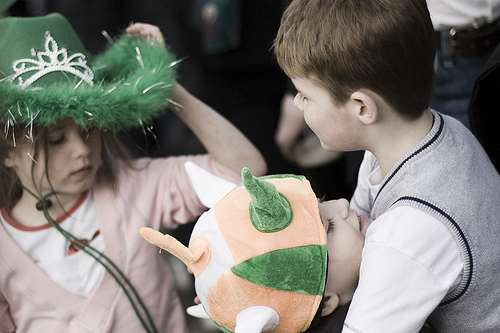 Young Jealousy by Photocritic.org on Flickr – an example of a street photograph involving children. As I do not have model releases for them, I cannot sell it as stock, but (at least in the UK), I can use it in a newspaper article related to the event in which it was taken (St Patrick’s day parade), or I could post it on Flickr and use it as part of my photography portfolio.
Young Jealousy by Photocritic.org on Flickr – an example of a street photograph involving children. As I do not have model releases for them, I cannot sell it as stock, but (at least in the UK), I can use it in a newspaper article related to the event in which it was taken (St Patrick’s day parade), or I could post it on Flickr and use it as part of my photography portfolio.
I recommend getting your shot and moving on though. The longer you stay, the more likely you will be noticed.
I don’t know what this guy was doing at your store. If it was a one time thing hopefully he just found her an attractive subject, But admittedly, it sounds “creepy.”
There are times when I may sit or stand somewhere for more than an hour or two just taking pictures of people maybe trying to catch their expressions on an amusement park ride or a water slide. Little kids ooing at zoo animals and the like are awesome shots.
Advice, if someone is trying to seclude themselves from you (the photographer) such as moving to an area out of your view, though it may still be public, respect their privacy. If someone POLITELY asks you not to photograph them or their children you should respect that. If they are rude, screw them. Do what you want. NEVER FOLLOW A LITTLE KID AROUND.
Lastly, there is no expectation of privacy when you are in public. That is why I suggest being conservative. A “peacock” will almost always get its picture taken especially if it spreads its tail. If someone is taking your picture and you do not like it:
1. Politely ask them to stop 2. Leave if they won’t
Consult your attorney if you have any questions.
Brad
Closing notes
Please note:
This post was excerpted from a comment of the ‘Your Rights as a Photographer‘ post, and was republished as an alone-standing article with permission from the original poster.
Please note that nothing on this blog can be considered legal advice – if you have a query, please contact your attorney.
Rights and Respect in photography
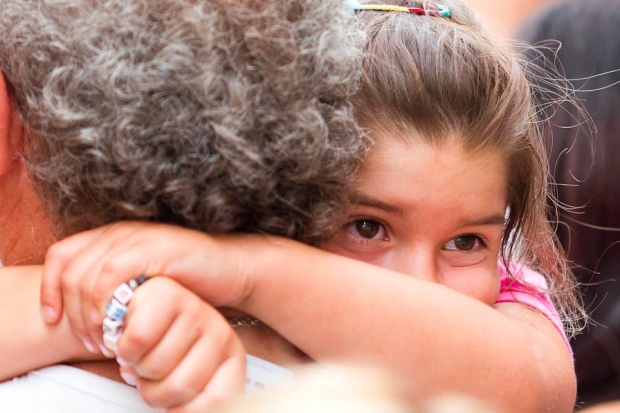
Today, I stumbled across an article on Found Photography, titled ‘Your rights as a photographer‘. At first, I was intrigued, thinking that it would have something to do about copyright.
Instead, it turned out to be about photographing Amish people, who, according to the article, "The Amish don’t like to be photographed because it might cause them to be tempted by pride". The article then finishes with some tips about your rights, if you come across Amish people in public places, and what your rights are regarding photographing them.
This reminded me of a different discussion I had a while ago, which regarded photographing people who didn’t want to be, also for religious reasons: Some Native tribes, for example, believe that a photograph of them means you steal their soul. It would, therefore, be less than wise to photograph them.
The rights, as described in the article, are as follows:
1. Almost anything you can see you can photograph. If you can see it, you can take a picture of it. If you are standing on public property you can photograph anything you like, including private property. It is important to realize that taking a picture is different than publishing a photo, which leads to point number two.
2. As long as you are not invading someone’s privacy, you can publish their photo without permission. You can take someone’s picture in any public setting and publish it without consequence (even if it portrays the person in a negative way) as long as the photo isn’t “highly offensive to a reasonable person” and “is not of legitimate concern to the public.” You can even publish photos if you took them on private property. While you may be punished for being on private property, there is no legal reason why you can’t publish the photo from prison!
3. As long as you aren’t using someone’s likeness for a purely commercial purpose, you have the right to publish the photo. You can use your photos of other people without their permission for an artistic or news purpose, but you can’t use them for a commercial purpose (such as an ad). You could sell a photo of a person without their permission, but you couldn’t use the photo in an ad saying the person endorses your product.
Whilst this is all correct, and really important to keep in mind, there is a different consideration to keep in mind, which brings me to the point of this article...
Respect in Photography
As a photographer, I have experienced feeling that I have touched people in a ways I wish hadn’t. An accidental invasion of privacy, so to speak, which made me feel as if I had commited the rudest form of sexual harassment – without even being aware of it.
In photography, One day, you can take a photograph of someone who is not wearing any clothes, but it will be okay. The next day, you can take a picture of someone who is fully dressed, even if you don’t see their face, and it is the worst of possibly imaginable sin. What is okay in one situation can be wrong in another.
The legal aspect
Many countries in Europe have added the European Convention on Human Rights as part of their set of laws. This convention has something that is devastating to privacy, called Section 10.
“Everyone has the right to freedom of expression. This right shall include to receive and impart information without interference by public authority and regardless of frontiers.” In practice, this is roughly the same as the 1st Amendment in the American Bill of Rights – the freedom to expression.
The conclusion drawn from the 1st amendment and Section 10 is that you can always take pictures. Even on private property, you have the right to photograph anything you can see.
Despite of something being legal, it doesn’t mean that you should, though.
The moral aspect
Several minority cultures believe that taking a picture is the same as stealing somebodys soul. Taking a picture of a member of such a culture is inexcusable. Upon having taken the picture – as far as they are concerned – it is too late.
If you, as a photographer – especially as a professional photographer – make the mistake of taking a picture of a member of such a minority group, you have fucked up beyond forgivenness. Call it a breach of professional conduct, or a kick to the shins of common sense.
Other times, however, you meet people of whom you really couldn’t have known their aversion to photography. I have experienced taking a picture of a couple looking wonderfully in love. When they realised I took the picture, the male half of the couple came over and asked me for the film. Apparantly he was married, and didn’t want me to publish the picture. What was I to do? I decided to promise him to not use the image, and deleted it off my camera. Not a legal choice - a moral one.
In the grand scheme of things, I haven’t been a photographer for all that long. Situations like that will arise again, I am sure. And I am certain that modesty, along with a dose of appropriateness, will get me through those situations.
I have a few friends who work as wartime photographers. In the job, they see some of the most horrible things known to man. The pictures in the newspapers are the mild versions of some of the pictures I have seen people come back with. And the pictures never go outside their photo albums. Why? Because some things don’t need to be shown.
A man far wiser than me said to me once: "These things are not secret, but they are sacred, and should not be taken lightly".
I know of no respected photographer who didn’t have respect for the subjects s/he photographs. And – even if you aren’t the best photographer in the world – showing respect will get you the respect you need to get a good start in the lion’s den that is Photography.
Hallelujah! Guidance for security guards when it comes to photographers
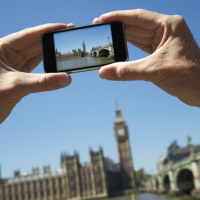
It’s taken bloody long enough and has come at the expense of dads being told that they can’t take photos of their kids in shopping centres, but finally there is some guidance for jumped-up heavies in uniforms who pass for security guards on what they can and cannot say and do to photographers. It’s the result of some pretty lengthy discussions that involved the Home Office, the British Security Industry Authority (BSIA), and photographers’ representatives such as Amateur Photographer and SceneThat. But by Juno, I’ve read it and it’s clear and reinforces some important points that we’ve been trying to teach them for a while now.
As far as I’m concerned, these are the edited highlights. You can go peruse the rest of the document – and it’s only four pages long – on the BSIA website.
- The size and type of cameras are not, in themselves, indications of suspicious behaviour. Large cameras, lenses and tripods should therefore not be viewed as being more suspicious than other types of equipment.
- If an individual is in a public place photographing or filming a private building, security guards have no right to prevent the individual from taking photographs.
- Security guards cannot delete images or seize cameras, nor can they obstruct individuals from taking photographs.
- Members of the public and the media do not need a permit to film or photograph in public places. This includes where an individual is in a public place but taking a photograph or film of a private building.
There is more, but this alone should help photographers reinforce that they’re not terrorists and by taking a photo, they’re not breaking the law or doing anything that’s otherwise nefarious. I think I’ll print out a copy and keep it in my camera bag.
Even schools don't care about copyright

If you've been following my writings here on Pixiq and elsewhere, you'll have noticed that I have a bit of a bee under my bonnet about copyright. I've written articles about how infringing on my copyright harms me, and how me having an RSS feed here on Pixiq isn't an excuse to nick my articles.
It's something I'm passionate about, but obviously, it goes beyond that, too: I'm hoping that in the middle of all of this ranting and raving, that my fellow photographers learn something, and that the people who are infringing on copyright understand what the big deal is.
It was a dark and stormy night...
Rewind, for a moment, if you would, back to March 7th 2011. I am alerted by a piece of software I have written that there is a possible copyright infringement, and consequentially, I find a website kept by a teacher at a secondary school in Canada.
On his site, he has pasted a PDF for a photography club final assignment. Whilst I do think that was very good idea, he also copied a whole article from my site. Namely: Giving a Good Photo Critique. Whilst I'm flattered that he thinks it's a good article, I can't help but wonder: Since this is posted to a website, presumably the students have access to the internet, so just a link would suffice, right?
So, 160-something days ago, I send an e-mail to the school, including an invoice for them to pay, for unauthorised use of my content. I also sent the e-mail as a telefax, because I'm aware that e-mails sometimes get lost in school bureaucracies.
What did I expect to happen?
Following my e-mail and fax, I expected them to get back to me and apologise for using my content by mistake, and pleading with me over low school budgets etc, and a promise that it would never happen again.
In return, I would tell them that I thought copyright infringement by a secondary school is a serious matter. And then I would probably not enforce the invoice, because ultimately, any secondary school that has a photography club sounds like they are the good guys, right?
Well, it appears that isn't the case; Instead of getting a response, a whole lot of nothing happened.
A skipping record?
So, on April 9th, I sent another e-mail, this time including the principal, the teacher who copied the content, and the general information e-mail address for the school. The e-mail was met with a wall of deafening silence.
On 21 April, I sent another e-mail, this time to all of the above plus the Vice Principal, the two acting vice principals, and the person who is listed as the Accounts support staff person. Again, no reply whatsoever.
So, on May 10th, I sent them a letter (for the attention of the principal), pointing out the multiple times I had tried to contact them by e-mail, letter, and fax, which, again, was ignored.
On June 29th, I sent them yet another letter (again, with a copy by telefax), including the statement that "I trust that the lack of communication from yourselves is an oversight, and not an indication that [the school] is failing to take copyright seriously."
However, it doesn't seem that this particular secondary school gives a monkey's banana about copyright infringements: Even after sending three letters, four e-mails, and four faxes, all of which were addressed to the teacher in question and four different principals, I have heard exactly nothing back. Not a peep of apology, not a single query about my invoice, and no attempt to take the content down - it's been nearly half a year, but the PDF file in question is still on the website.
What is the message this sends to the kids?
On their own website, the school's principal writes that the school is all about Responsibility and Respect. However, I would say that not responding to eleven separate attempts to make the school aware of a copyright infringement doesn't particularly scream "respect" or, indeed, "responsibility" to me.
So, by not taking responsibility and acting in a simple matter of copyright infringement, what is the message the school is sending to their more than 1,000 students? That copyright isn't worth caring about, perhaps? Or that you don't have to deal with an issue when it crops up? Or maybe that if you ignore a problem for long enough, that it'll eventually go away?
I don't know; but I do know that I'm rather deeply unimpressed. I've already discovered that the police doesn't understand copyright, and now it turns out that schools don't really care that much either.
No wonder that a lot of us who are making a living by creating - whether it's photography or the written word - are struggling.
Finally - closure.
Soon after this article went live, the school's new principal called me, and we exchanged some e-mails. I also received an e-mail from the teacher who originally posted the material. He says he passed the invoice and complaint on, and assumed that somebody else had dealt with it, citing that the school is 'very busy' and that dealing with my complaint was 'not a high priority'.
Nonetheless, on September 12th, the school paid my invoice, and concluded the matter to everybody's satisfaction.
Just goes to show that sometimes, a little bit of public peer pressure is what it takes to be listened to.
Further Reading
This is part of a 4-story series:
- What is copyright, and how do infringements harm you?
- Protecting your copyright in a Digital World
- Just because it's in my RSS feed, doesn't mean you get to steal it
- Ignorance is no excuse
In addition, you might enjoy Police Fail: Copyright, what is that? and Even Schools Don't Care About Copyright...
Responding to the Government's response to the Hargreaves Review

It’s a bit of a convoluted title, I know. But after Ian Hargreaves published his review of what should be done about intellectual property, copyright, and encouraging innovation, the Government penned a response, saying what it agreed with, what it didn’t, and what it was planning to do about it. Now of course, any interested parties are responding to what the Government has said. There are a lot of replies flying about here. From the photographers’ perspective, the Association of Photographers has issued a response to the Government. Here’s what they had to say:
Broadly speaking, the Government has agreed with pretty much all of the recommendations set out by Hargreaves. This embraces some positives but disturbingly, a great many areas which concern us are not addressed.
We have the opportunity to be involved, and are already, at a level of policy-making which can direct the change in the structure of the IP framework over the next few years. We have the opportunity to make our voice heard. Our perspective is set out below;
Firstly, we welcome the Government’s commitment to providing a fast track small claims route for copyright infringement through the County Court system. However, we are concerned to see that the caveat of ‘value for money’ has been attached to this. This crucial reform of the court system must be implemented as soon as possible and the current proposed ceiling of £5000 for claims should be raised to £10,000.
We agree that the proposed limited private copying exception makes sense and would de-criminalise a huge sector of the population without affecting the revenues of those creators. We feel that a carefully drafted exception for parody may be appropriate too but in both cases this must be done in such a way as to not prejudice creators. We note that the Government has said it will consult widely on this (and other points) and insist that creators are involved in that process.
We approve of the proposal that any Digital Copyright Exchange (DCE) would work as an independent marketplace where rights holders can set their own rates and that participation should be free to both creators and users with open standards so that access to such a database can be automated through software solutions. We agree that participation should be voluntary and therefore not in contravention of the Berne Convention. We have a great many concerns regarding any DCE, but as no firm proposals for such a body exist yet, we will wait to hear what the Government has to say by the end of this year as they have stated.
We agree with and welcome the statement that any proposals for the use of orphan works should be subject to satisfactory safeguards to prevent unfair competition from any licensing of such orphans. We agree that any proposals for Extended Collective Licensing (ECL) should be adoptive rather than enforced on any sectors in the industry.
We are very concerned by the proposal that licensing of orphan works could extend to commercial uses, something we, and others, have been against from the start as it undermines the creators’ marketplace and makes a mockery of existing licensing arrangements. We are also alarmed that the Government has made no mention of Moral Rights, which although outside the remit of Hargreaves’ review, are vital to the development of better IP legislation. It is nonsense to talk about licensing orphan works when we still do not have unwaivable Moral Rights, in particular, the right to be identified.
We note that the Government proposes to move forward on the basis of “open and transparent” evidence and are alarmed that whilst they acknowledge that SMEs find it very difficult to provide empirical evidence, there is little suggestion that other ways of engaging with those businesses will be sought.
We are dismayed to see that the Government has not taken the opportunity to provide appropriate education and protection for consumers regarding enforcement, but has placed the burden of such activity on rights-holders and creators. We have little enough time and money as it is to engage in such action.
In conclusion, we accept that there seem to be some areas that the Government wishes to address for the benefit of creators and welcome the opportunity to be involved in discussions around this but we are dismayed that the Government has seemingly missed an opportunity to really strengthen the creative industries in the UK and ensure their survival and future growth.
The Association of Photographers
8th August 2011
Behind the scenes at SceneThat

When you hear that the government is in talks with various groups, interested parties, and representatives from particular communities regarding this proposal or that law, you might wonder who these people are. For all we know, they could be wind-up dolls that officialdom wheels out for the purpose of nodding approval and not objecting.
I’m really pleased – and relieved – to report that when it comes to consulting on photographers’ rights, it’s not a dolls’ house of Barbies and Kens that Theresa May turns to. One of the organisations that talks with the Home Office is SceneThat. It was founded by former BBC-man Mark Singleton in 2008 and earlier this week I asked him a few questions to find out a bit more about him, his organisation, and his work for photographers’ rights.
It turns out that SceneThat came about through a life-changing, in fact a near life-ending, experience for Mark, as he explains: ‘During the early part of 2008, I had a brain attack. Literally. A blood vessel at the back of my head burst, and changed my world in a stroke.’
Okay, so it wasn’t the burst blood vessel that led to the foundation of SceneThat directly, more what happened to Mark during his convalescence when he couldn’t face watching daytime TV (I think we’re all with you there, Mark) but decided to get out on the streets of London with his camera and a tripod (sounds like a valid alternative to me).
You’ve probably guessed, the experience of being the man with the camera and tripod wasn’t a pleasant one. ‘I suddenly understood why the press was so full of horror stories about the treatment of photographers. Twenty years prior to that, as a member of BBC Newsgathering, I had “been there, done that, got the T-shirt”. It was fair to say that in my first month of wandering around with a camera as part of my “rehab”, I met more hostility than I had in a decade of covering everything from the Troubles in Northern Ireland to the widespread riots during 1984’s summer of discontent.’
Realising that it wasn’t just the police who didn’t understand fundamental laws in this country, but that photographers were doing themselves absolutely no favours with a very wishy-washy knowledge of what they could and couldn’t do, knowledge Mark likens to that which is rolled out at pub closing time, Mark decided to do something about it. As Mark put it, it’s all very well wanting to make the country a safer place, but it shouldn’t come at the price of abandoning our freedoms.
So, he spoke to a few photographer ‘buddies’, who happened to be high up in the legal world. They offered to keep him on the ‘straight and narrow’ as he strove to point photograhers in the right direction when it came to their rights, provided that he didn’t offer specific legal advice. You can land yourself in rather murky water if you start doing that. SceneThat helps photographers to find their own authoritative answers.
Over the past three years individual ‘legal eagles’ have come and gone from the SceneThat, ehm, scene, but they’ve maintained their objective of providing pointers to the facts. As a result of his own improved knowledge Mark has campaigned on behalf of photographers; talking with politicians, police and anyone else who would listen!
Mark says that he’s often asked if things are really going to get better: ‘I can only answer by saying that in my experience, there is now a real desire to cull decades of “poorly-worded” laws, and replace them with less, fairer and more proportionate legislation.’
That really does sound positive, but he points out that we can’t afford to take our eye off of the ball and we have to ensure that these intentions are followed through.
And there is some movement, Mark says: ‘Continuing the top-down approach, Government is introducing changes to policing that delivers greater accountability coupled with better internal guidance and procedures.’ Mark was recently one of those ‘interested parties’ who met at the Home Office alongside some people who advise on training security guards – the aim was to cascade the message to every level of ‘officialdom’. We might not be there yet, but Mark is convinced that things are getting better. ‘Over-zealousness is being replaced with increasing levels of common sense. It is a slow process, but lasting change often requires that approach.’ No, big change doesn’t happen quickly, just as difficult problems don’t have easy solutions.
When I asked what still needs to be done, Mark told me that SceneThat will be keeping their eyes on officialdom to make sure that promised changes aren’t forgotten. ‘We’ll keep the pressure on our leaders and those who lead police and security officers to ensure that our safety doesn’t mean giving up our freedoms. As photographers, we’ll continue to think how the pursuit of our art and craft may be perceived by others – and we’ll help them to overcome their anxieties in the process. After all, photography is not a crime.’
Many thanks to Mark for chatting with me. If you are in search of legal advice regarding photographers’ rights, SceneThat is the perfect place to start. They’ll empower you to find out just what you need to know. And if you have a bad experience with a police officer or a security guard, let them know. The more knowledge that they have of people’s experiences, the more effective their campaigning can be.
Is 500px encouraging copyright theft?
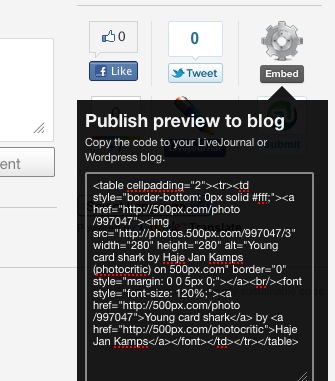
The problem is the 'embed' functionality that's built into 500px. In the social networking box, there are your standard 'like' on Facebook, 'tweet' on Twitter, Submit to Stumble Upon and all that jazz.
One of these buttons reads 'Embed', and gives you a HTML snippet that makes it easy to embed photos into your blog. In fact, the Embed code goes further, and actively encourages it: "Copy the code to your LiveJournal or Wordpress blog".
I don't want to be difficult, but I haven't given permission to 500px to dissaminate my photos like that. Not without my permission, not without a licence in place, and (probably) not without paying me.
If I find a series of my photos on someone else's website, where they are being exploited commercially, I'd send them a takedown notice and an invoice.
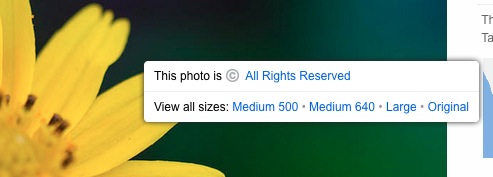 The problem, then, is that 500px seem to be encouraging its users to commit copyright infringements of my copyrighted materials. They claim, apparently, that it is "good exposure" for the photographers. Personally, I strongly disagree - I'll decide what is good exposure for my own photos, thank you very much.
The problem, then, is that 500px seem to be encouraging its users to commit copyright infringements of my copyrighted materials. They claim, apparently, that it is "good exposure" for the photographers. Personally, I strongly disagree - I'll decide what is good exposure for my own photos, thank you very much.
Right-clicking on a photo on Flickr has a completely different outcome: You get a pop-up reminding you that the content is copyrighted.
Against their own T&C
Okay, I'm showing off my geekdom properly, in admitting that I am actually reading the Terms and Conditions on the sites I visit, but allow me that.
On the 500px site, in the Terms of Service, it states "By submitting photographic or graphic works to 500px (...) you agree that this content fully or partially may be used on 500px web-site for promotional reasons (such as photos at home page)".
There is no mention whatsoever about re-distributing my images to a wider audience, whether via blogs, LiveJournal, Twitter, Facebook, etc. Enabling (nay - encouraging) users to embed my copyrighted photos on their own blogs, then, is against 500px's own terms and conditions.
Thanks, but no thanks
I understand what 500px is trying to do: Opening the internet is admirable, and wanting to share content all over the place is a great idea. But it's only a great idea when you own the content, and when you've decided that this fits in with your business objectives, and your approach to copyright.
500px deciding to share my photos with the world, encouraging people to commit copyright infringements via a feature I cannot turn off, is not my idea of a well thought-through website.
Let me turn off Embed feature, at least...
...Unless you are happy to receive a ream of invoices from me, of course. In which case, carry on, and could you send me the address to your invoice payable office, please?
Hat tip to @phillprice for the tip re: this article











